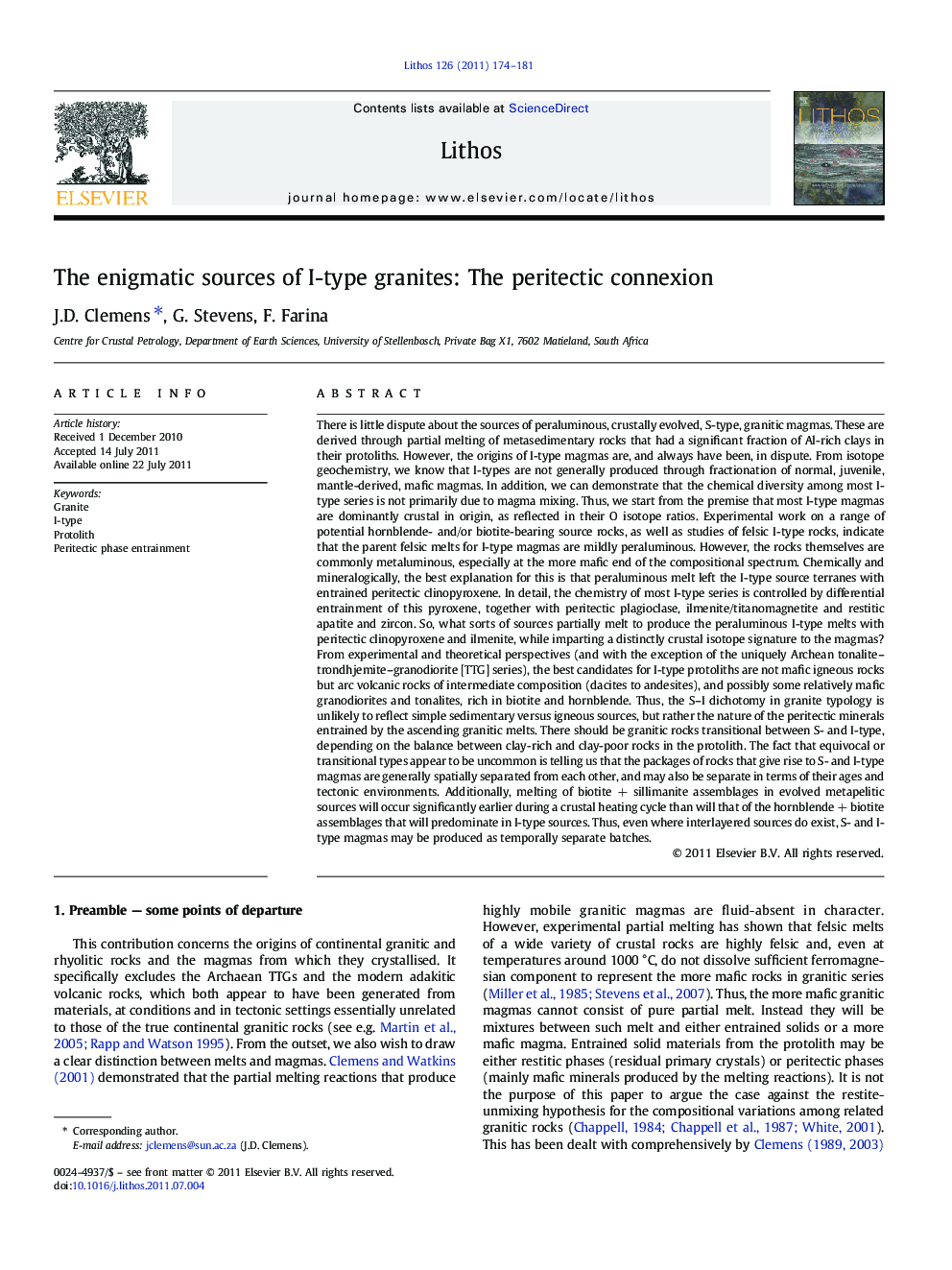| کد مقاله | کد نشریه | سال انتشار | مقاله انگلیسی | نسخه تمام متن |
|---|---|---|---|---|
| 4716709 | 1638716 | 2011 | 8 صفحه PDF | دانلود رایگان |

There is little dispute about the sources of peraluminous, crustally evolved, S-type, granitic magmas. These are derived through partial melting of metasedimentary rocks that had a significant fraction of Al-rich clays in their protoliths. However, the origins of I-type magmas are, and always have been, in dispute. From isotope geochemistry, we know that I-types are not generally produced through fractionation of normal, juvenile, mantle-derived, mafic magmas. In addition, we can demonstrate that the chemical diversity among most I-type series is not primarily due to magma mixing. Thus, we start from the premise that most I-type magmas are dominantly crustal in origin, as reflected in their O isotope ratios. Experimental work on a range of potential hornblende- and/or biotite-bearing source rocks, as well as studies of felsic I-type rocks, indicate that the parent felsic melts for I-type magmas are mildly peraluminous. However, the rocks themselves are commonly metaluminous, especially at the more mafic end of the compositional spectrum. Chemically and mineralogically, the best explanation for this is that peraluminous melt left the I-type source terranes with entrained peritectic clinopyroxene. In detail, the chemistry of most I-type series is controlled by differential entrainment of this pyroxene, together with peritectic plagioclase, ilmenite/titanomagnetite and restitic apatite and zircon. So, what sorts of sources partially melt to produce the peraluminous I-type melts with peritectic clinopyroxene and ilmenite, while imparting a distinctly crustal isotope signature to the magmas? From experimental and theoretical perspectives (and with the exception of the uniquely Archean tonalite–trondhjemite–granodiorite [TTG] series), the best candidates for I-type protoliths are not mafic igneous rocks but arc volcanic rocks of intermediate composition (dacites to andesites), and possibly some relatively mafic granodiorites and tonalites, rich in biotite and hornblende. Thus, the S–I dichotomy in granite typology is unlikely to reflect simple sedimentary versus igneous sources, but rather the nature of the peritectic minerals entrained by the ascending granitic melts. There should be granitic rocks transitional between S- and I-type, depending on the balance between clay-rich and clay-poor rocks in the protolith. The fact that equivocal or transitional types appear to be uncommon is telling us that the packages of rocks that give rise to S- and I-type magmas are generally spatially separated from each other, and may also be separate in terms of their ages and tectonic environments. Additionally, melting of biotite + sillimanite assemblages in evolved metapelitic sources will occur significantly earlier during a crustal heating cycle than will that of the hornblende + biotite assemblages that will predominate in I-type sources. Thus, even where interlayered sources do exist, S- and I-type magmas may be produced as temporally separate batches.
► I-type granitic rocks are not differentiates of more mafic magmas.
► They are not generally the products of mixing between crustal and mantle magmas.
► The magmas are formed by the breakdown of biotite–hornblende mineral assemblages.
► Their compositions are controlled by entrainment of peritectic Cpx, Pl, and Ilm.
► They are melts of arc crust, which gives them connexions with both the mantle and the crust.
Journal: Lithos - Volume 126, Issues 3–4, October 2011, Pages 174–181